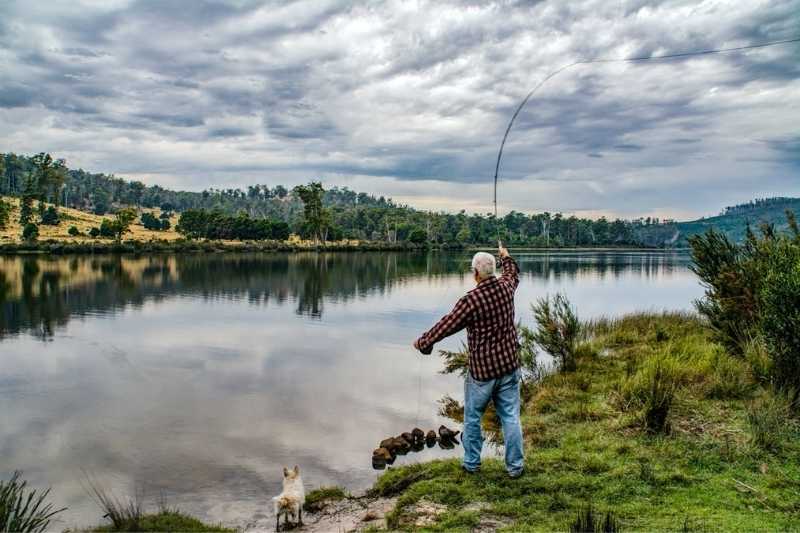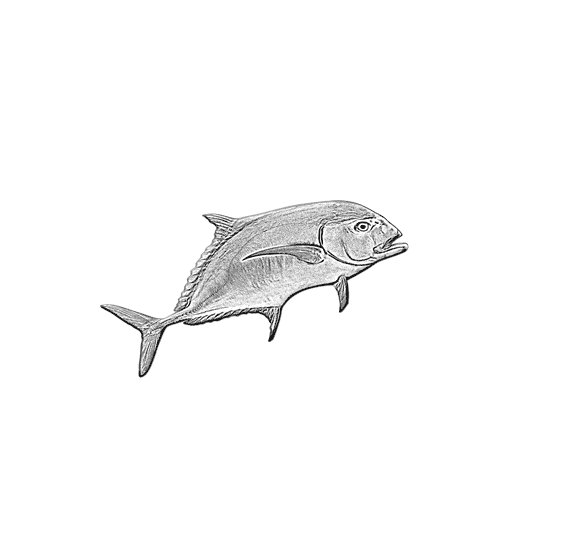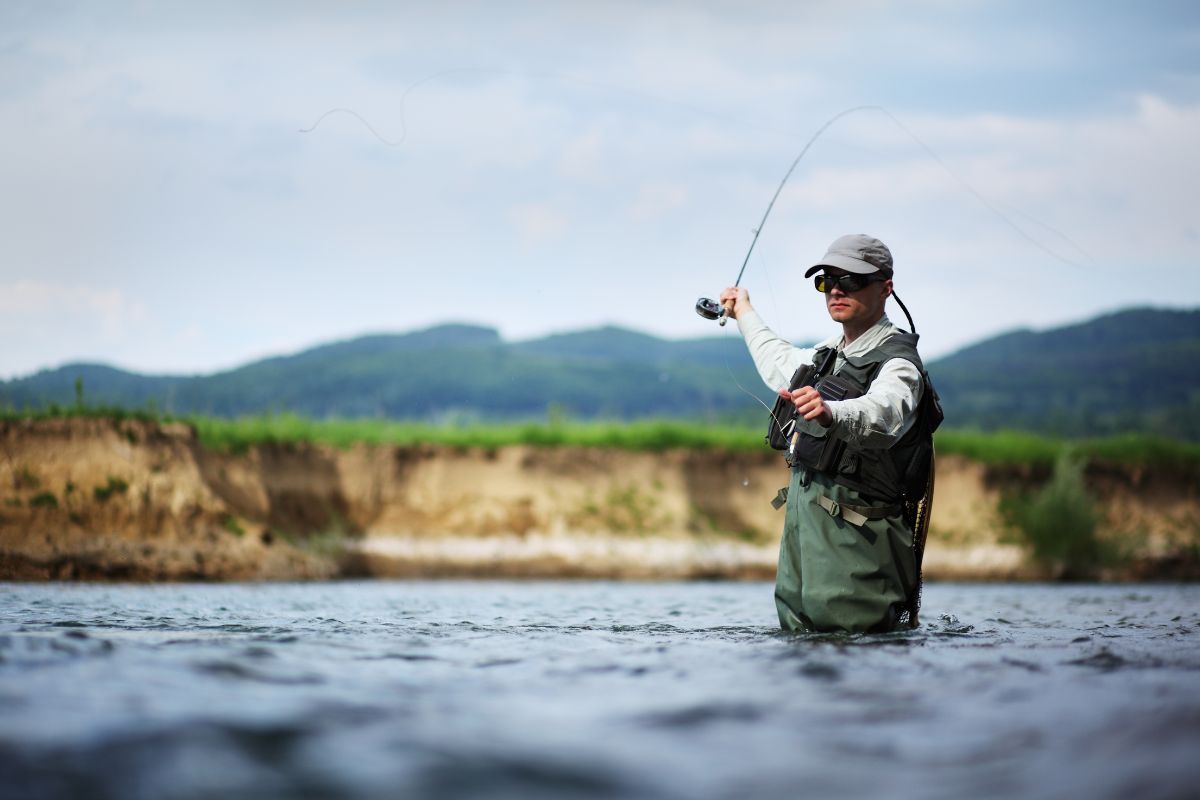Fly fishing is exciting and always a challenge when trying to read the water and find out where the big fish might be laying. There have been many conversations between anglers on which type of fly fishing you should do, upstream or downstream fishing.
While they do have their ups and downs, we want to dive into this topic deeper and give you the best answer for catching as many trout as possible, as well as give anyone that is new to fly fishing some lessons on how to fish both upstream and downstream.
Do you fly fish upstream or downstream for trout? Fishing upstream for trout gives you the best chances for catching fish, especially with dry flies. Not only are you behind the fish where they can’t see you, but it also lets the fly land and float downstream causing the trout to move out of their hiding place to grab your fly.
This will give you a better distance advantage of overcasting and catching trout. This method also tends to be the easiest way to fly fish streams and rivers as well.
What Is Upstream Fishing?
Upstream fishing is when you throw your fly towards the way the current is moving so that your fly will float downstream with the current, which causes the fish to move down towards you to grab the bait. You can cast upstream and float your bait into a nice pool of water without letting the fish see your line.
Make sure that you calculate your cast to make sure that only your leader is visible for where you want the fly to go.
It is okay if some of your normal lines gets into your spot, as it will float downstream and not be visible by the time your fly gets to its location. you will have to take some of the slack in as your bait floats closer to you, or you will end up with line going everywhere around you.
Here is a video on how to actually cast and fish upstream.
What Is Downstream Fishing?
Downstream fishing is when you cast your fly further down from you, and you let the current take your fly. You have to be careful not to let your line get too tight, or you will pull the fly away from where you want it to go, so it takes more practice to get it right.
This type of casting allows you to more accurately put your bait where you want it to be instead of trying to let the current take it. The only downside to this style of fishing is that since you are in front of the fish, they can see and hear your every movement, so you must have a good smooth cast. There could also be a chance that your fly might sink and get stuck in a rock.
Here is a great video on how to cast and fish downstream.
Nymph VS Dry Flies
There is a very big difference between fishing with dry flies and nymphs. Dry flies sit on top of the water and float downstream causing the fish to strike on top of the water.
These flies mimic normal bugs landing on top of the water and actually look like bugs that are alive. Nymph flies are the bait that is designed to look like insect larva and sink in water.
These types of flies are designed to float underneath the water right off the bottom so that they are right in front of the trout’s face. This makes the fish exert less effort in grabbing your bait, so they do not have to leave their hiding spot.
Nymphs should move and wiggle like actual live insect larva when they are in the water. You can use both dry flies and nymphs when fishing upstream or downstream, but it has been shown that dry flies typically work better for upstream fishing.
The Current Will Help
When you are upstream fishing, the current is your friend, and it is important for you to take advantage of it. If you are not able to read the current, your bait is going to go in a completely different direction than where you want it to.
It might take a few casts to get the layout of the river and current before you can really hone in on where you can put the fly, but once you do, you should be set.
Having the current help you in your upstream fishing will also let you put your bait out to more fish. You can cast further up and let the current take your bait where you want it to instead of casting right into the spot you think there is a fish.
The current also helps you with downstream fishing because you do not have to be as accurate with your cast, and helps you let line out. This will cause you to have a softer cast and your bait will look more real.
Can Fish See My Line?
Fish have great eyes and can see almost everything below and on top of the water. Fish can see you and your line from the water, so it is important that you do not stand near where you want to try and fish. fishing upstream gives you more room to throw out your line without being seen by the fish.
Fishing downstream has its advantages too because while you are facing the fish, your fly will be seen first before your line will.
Since you will almost always be using a leader, you should not have any problem throwing your line upstream and having the fish see it. Even if you throw your line upstream over fish, it will follow the current and move away from allowing them to not be scared and will see only your bait.

Is Downstream Fishing Bad?
Fishing downstream is not bad at all and is really good for putting the bait right in front of the fish, especially if you are using nymphs. Fishing downstream also lets you put the nymph right into the cracks of rock formations, but be careful not to get your fly stuck under a rock.
Fishing downstream with dry flies works great too, but you are letting out more line. Fishing downstream lets you target a single point of where you want to send your fly, but also puts more stress on your line, and the fish when you get a bite. It is important to play the fish when you catch one while fishing downstream.
Should I walk Upstream Or Downstream When Fishing?
It is always best to walk upstream when you are fly fishing. This helps you keep your footing, and you are walking into the current so you can feel where you are going to step. Walking downstream can give the current more of a chance to knock you off balance.
Walking downstream can also make you lose your footing more than walking upstream, and if you slip, you will land on your butt. If you slip while walking upstream, you are more likely to fall on one knee and have a better chance of catching yourself, so you will not get swept downstream and lose your gear.
Final Thoughts
While upstream fishing is the most popular for trout fishing, there are advantages of downstream fishing as well depending on your choice of bait, and where you want to put it.
Upstream fishing allows you to hide more from the fish because fish will be facing into the current, so you will have more stealth than if you fish downstream. No matter which way you like to fish, be careful and watch the current so you keep yourself safe.

